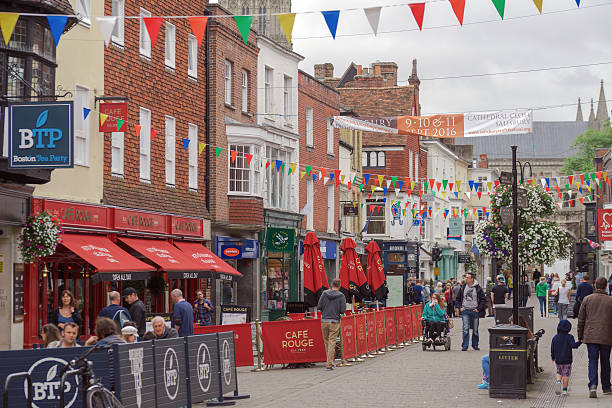
Retail Gazette recently reported that our high streets could be ‘permanently scarred’ as a result of post-pandemic trends. The work-from-home revolution has undeniably had lasting impacts on footfall, and there is no shortage of insight pieces recording the increasing shift in shopper preferences away from the high street and towards online retail.
While these trends are hard to ignore, there are still many positives which can be taken from the ‘new normal’. With more people working remotely during and after the pandemic, and many companies continuing to adopt a hybrid working model, people have greater opportunities to spend money locally, and rediscover their local high street. The prevalence of hyper-local and ultra-convenient shopping over the last couple of years has put the spotlight firmly on the state of our town centres and high streets, which has been reflected in a recent government bill to take assertive and ambitious action to deal with the oversaturation of vacant retail units across the UK.
The Government’s draft ‘Levelling Up & Regeneration’ bill proposes to deal with the excess of empty premises in our shopping centres and high streets by allowing local authorities to require a compulsory rent auction on any unit that has been vacant for 12 months or more. Rather than a traditional long-term lease of 20 years, landlords would instead offer new tenants a contract on a shorter term, i.e. 2-5 years. Most remarkably, these proposals stipulate that should the landlord refuse to engage in these requests, the local authority would then have the power to let the property on their behalf.
This is undeniably a highly interventionist strategy, which will likely bring about its own challenges and oppositions – notably the lack guaranteed income and the prospect of property devaluation for the landlord. Nonetheless, think tank Onward has endorsed these proposals as having the potential to bring up to a staggering 58,000 premises back into use. In its ‘Street Bids’ report, Onward affirms that these hard-line measures will tackle the issue of our declining high streets where other schemes such as licensing reform and locally-funded regeneration projects have failed. While the report acknowledges that ‘a steady increase in business rates, declining footfall, minimum wage rises and the growth of internet shopping’ have combined to create a weakening demand for retail space, Onward asserts that the inevitability of the demise of the high street has been ‘greatly overstated’. Instead, the report cites the excess of vacant retail space and the reluctance of landlords to move on rental prices as having significant negative consequences for communities within urban areas, creating a vicious cycle of deterioration. High vacancy rates espouses low engagement in local retail environments; and lower retail sales leads in turn to a lack of interest and investment in struggling areas. Onward argues that high streets can yet again become an anchor and driver of footfall and profit if they can prove to meet current and future consumer aspirations. These are not necessarily tied to retail and leisure, which is why the removal of obstacles to repurposing of these failed spaces is so vital.
Whether this particular government scheme is successful or not in mobilising the commercial rental market, there is certainly a huge opportunity in repurposing retail space to attract different types of visitors, and modernising the many iconic buildings on our high streets to once again play an important role in communities. This may follow a more conventional route of preserving units as leisure and entertainment spaces, such as gaming hubs, fitness centres and dining experiences; or perhaps a move towards a more radical overhaul in the vein of co-working spaces, ghost kitchens, data centres or even residential. However these spaces are repurposed, the creation of well-designed, thoughtful and aspirational mixed-use developments could empower communities to reconnect; and grow footfall beyond locals and tourists to new residents and workers who are attracted to new amenities and opportunities.
Monitoring the impact of these regeneration initiatives will be just as important as the measures themselves. For local authorities to gain quantifiable and actionable insights into the successes of their projects, the value of high quality data and intelligence-driven analytics cannot be overstated. Inkspotwifi are proud to work with landlords, agencies, councils and BIDs across the UK to collect invaluable demographic data and behavioural insights from our free public WiFi captive portal and footfall counting devices. We are continuously researching and developing ways to expand our solutions to provide the best possible insights to our clients – empowering them to identify and respond to the nuances of their audiences.
For more information on our data solutions, get in touch with us today!
📞 0131 556 4034 📧 [email protected]

You must be logged in to post a comment.